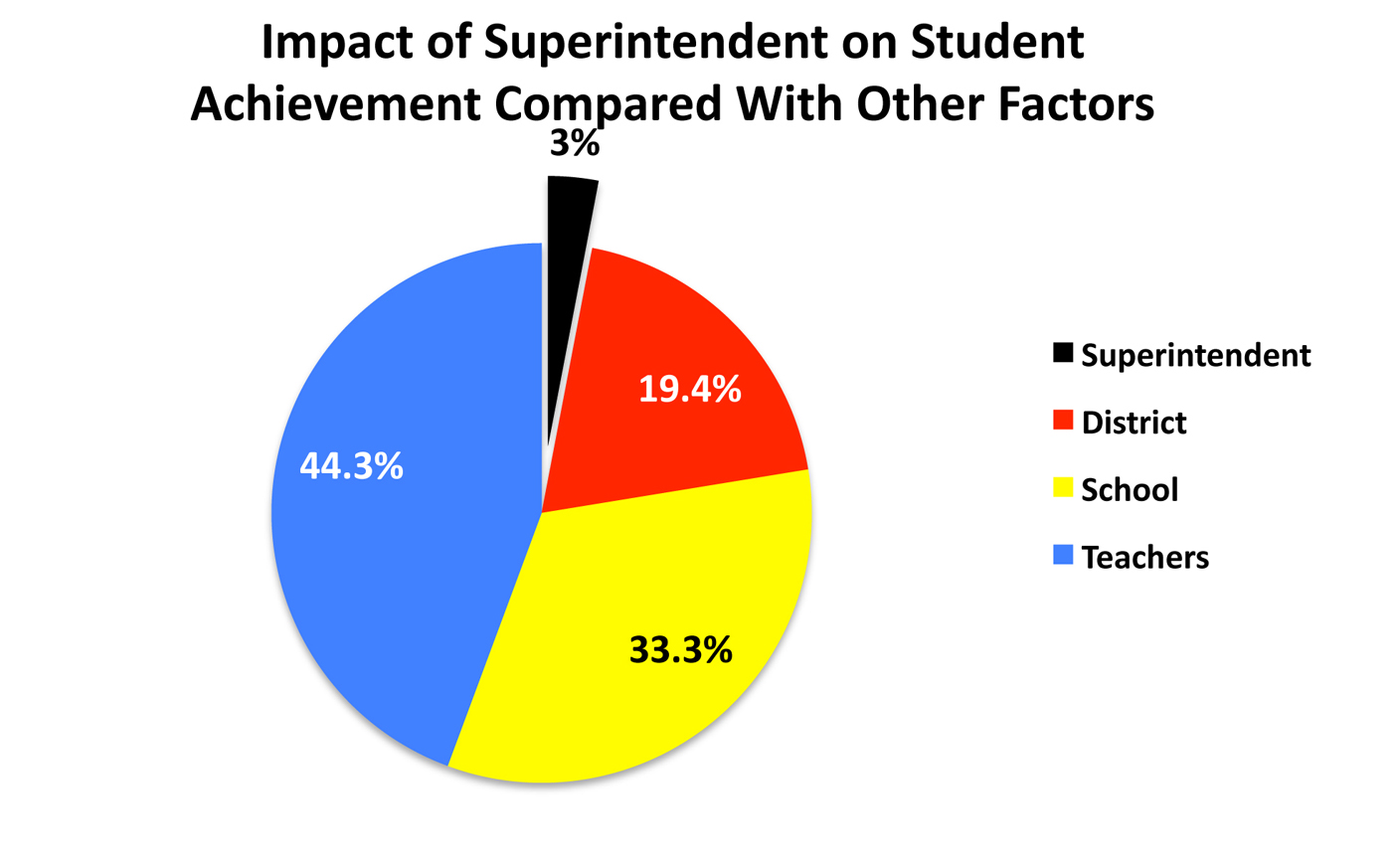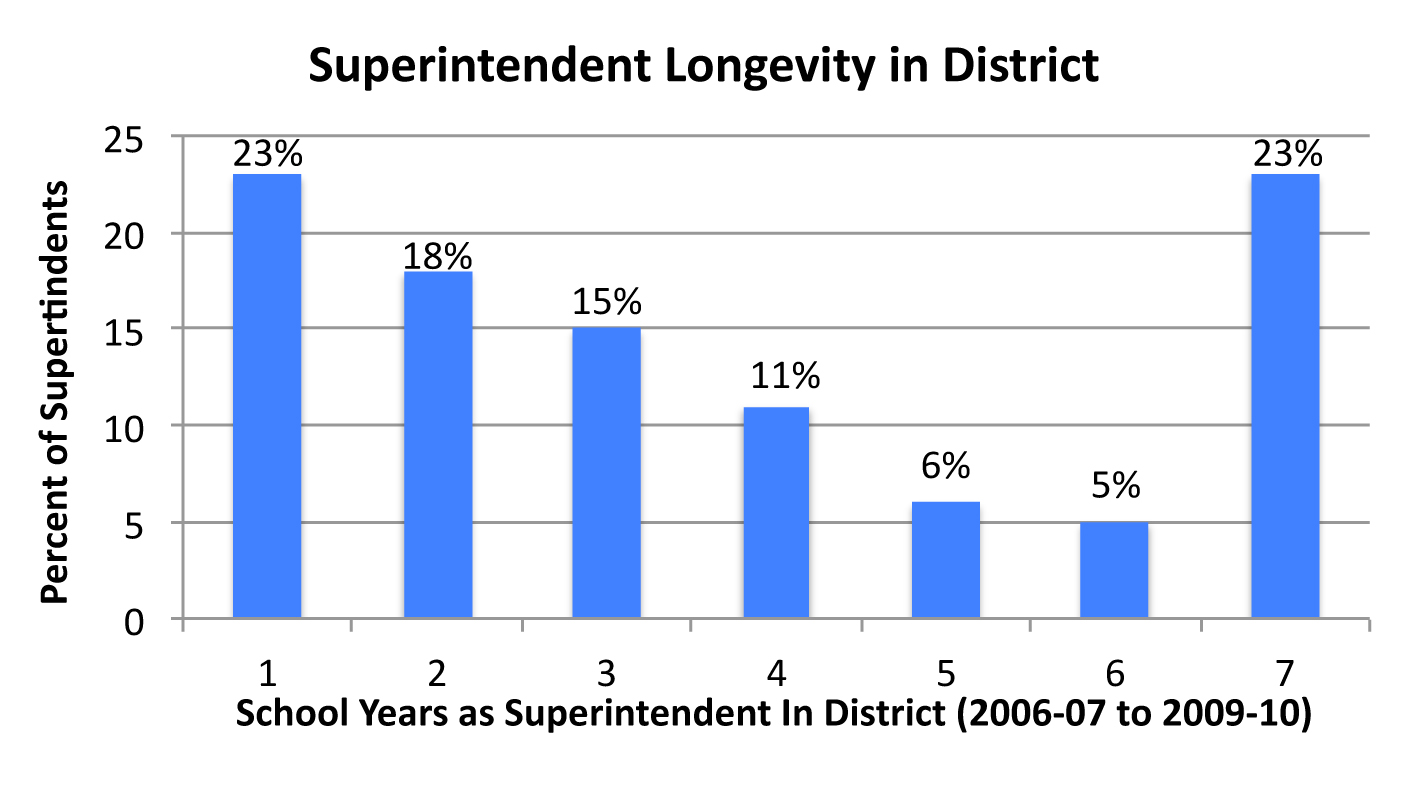What impact do school superintendents have on student achievement?
Why is this question important? As chief school administrator, a superintendent oversees the schools and educational services within his or her school district. To the public, a school superintendent is the face of the local school system and is given much of the credit or blame for the school system. Thus, it is important that the public and educators understand what research can tell us about the actual influence superintendents have on their schools and the students they serve.


Results: A new study (Chingos, Whitehurst, & Linquist, 2014) found that of all the factors under the control of a school system, superintendents by far had the least influence on student achievement. The impact of just 3% attributed to superintendents may be statistically significant, but it is negligible in terms of overall influence on student achievement.
The rapid turnover of superintendents across the country contributes to the minor impact. The typical tenure of a superintendent is only 3 to 4 years. Because it takes 2 to 4 years to achieve full implementation of initiatives (Fixsen, Naoom, Blase, Friedman, & Wallace, 2005), the average superintendent never has the time to effectively implement interventions before a new superintendent arrives and begins anew the process of reform.
Implications: Understanding the limitations of the job and the short tenure of superintendents should lead to improved recruitment and hiring procedures that rely less on inflated expectations and more on hiring top managers who support practices proven to cultivate student success. This knowledge should also play a vital role in the selection of superintendents who embrace their predecessors' practices and provide continuity of leadership for staff, students, and the entire school system. It is time to stop replacing core practices and reforms with each change of top leadership (Doherty & Abernathy, 1998; Seashore Louis, Dretzke, & Wahlstrom, 2010).
Study Description: The Chingos et al. study collected K–12 administrative data from 2001 through 2010 in Florida and North Carolina. Every student in grades 3 to 8 in North Carolina and grades 3 to 10 in Florida assessed in reading and mathematics was included in the study. The analysis used hierarchical linear modeling to link student achievement, enrollment, and demographic data to teacher, school, district, and superintendent data. Because of issues with some data collected for 2001 through 2005, the researchers calculated superintendent longevity for 2006 through 2010.
Definitions: Hierarchical linear modeling: A statistical model that allows for analysis at multiple levels. The model nests lower-level units of analysis within higher-level ones, such as students nested within schools nested within school districts.
Citation:
* Chingos, M. M., Whitehurst, G. J. R., & Lindquist, K. M. (2014). School superintendents: Vital or irrelevant? Washington, DC: Brown Center on Education Policy, Brookings Institution. Retrieved October 21, 2014 from http://www.brookings.edu/~/media/research/files/reports/2014/09/superintendents%20whitehurst%20chingos/superintendentsbrown%20center9314.pdf.
Doherty, K., & Abernathy, S. (1998). Turning around low-performing schools: A guide for state and local leaders. Washington, DC: U.S. Department of Education.
Fixsen, D. L., Naoom, S. F., Blase, K. A., Friedman, R. M., & Wallace, F. (2005). Implementation research: A synthesis of the literature (FMHI Publication #231). Tampa, FL: University of South Florida, Louis de la Parte Florida Mental Health Institute, National Implementation Research Network.
Seashore Louis, K., Dretzke, B., & Wahlstrom, K. (2010). How does leadership affect student achievement? Results from a national U.S. survey. School Effectiveness and School Improvement, 21(3), 315–336.
